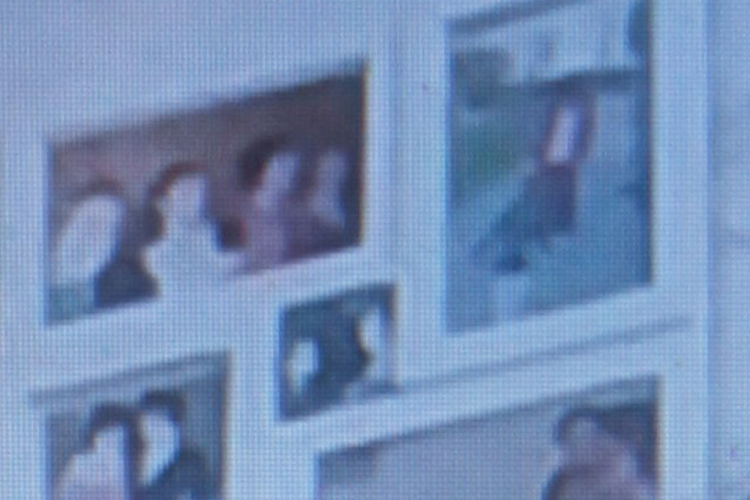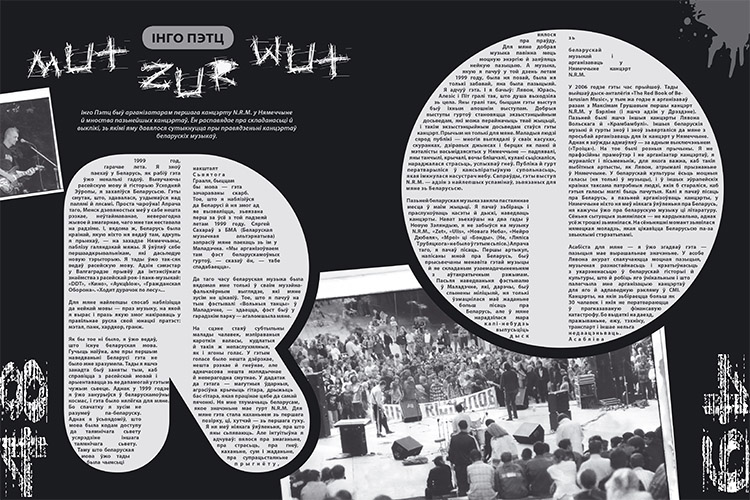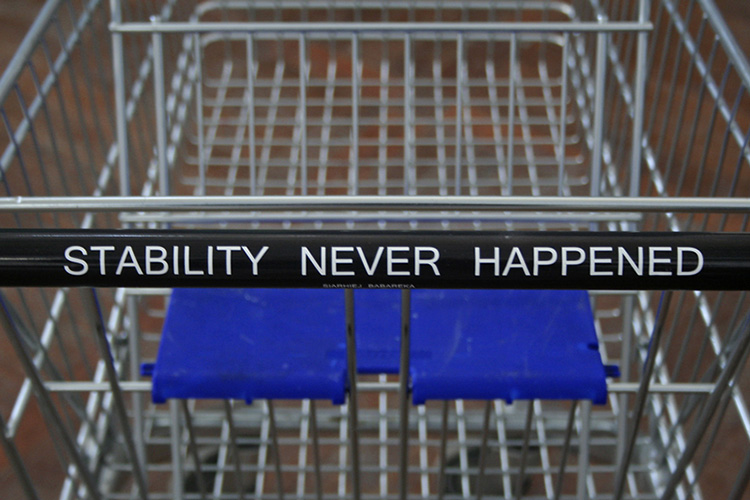
Аўтар: Tania Arcimović, 14/12/2014 | ART Cult Aktivist project SPECIAL
NOT LEGITIMATION, BUT — IMITATION
BELARUSIAN CONTEMPORARY ART TRAPPED IN LOCAL «MAINSTREAM»
In the last few years changes have been clearly observed in the cultural life of Belarus: new activities and forms of cooperation are emerging, competition is increasing, introducing a positive contribution to the culture as a whole. But if only a year ago, experts noted that the main role in this process belonged to independent initiatives, 2014 is remarkable due to the activities of public institutions.
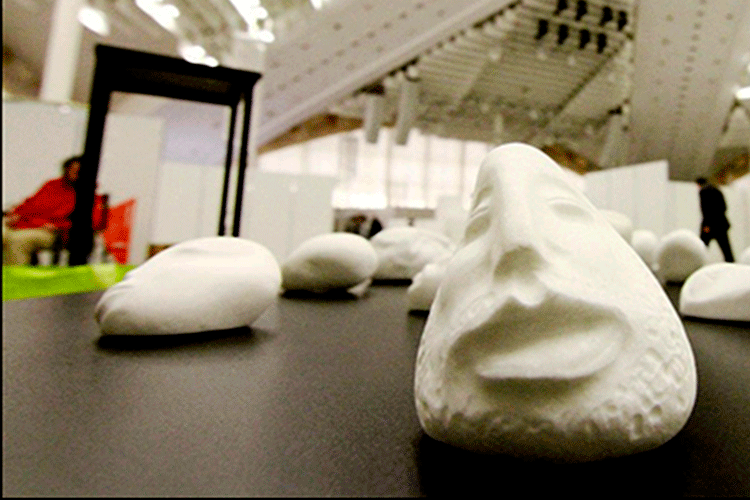
Photo: belapan.by
The exhibitions of the Belarusian unofficial art of the 1980-90s open one after another in museums, Center for Contemporary Art (CCA) got active again in initiating art-projects, lectures and workshops. On the platform of Museum of Modern Fine Art (MMFA) the street art festival Vulica Brazil was held in November-December 2014, the forum Suma Sumarum dedicated to the 1990s activities of the independent gallery The 6th Line was launched in its walls, as well as in Center for Contemporary Art in November-December 2014. Several works of informal artists got into the exposition Ten Centuries of Art in Belarus (The National Art Museum, March-July 2014). The exhibition Avant-gARTe: from the Square to the Object became an obvious culmination of contemporary art legitimation in the official cultural field being purposefully ordered by the state to be held in the course of the Ice Hockey Championship in Minsk (April-June 2014). Finally, in October the Belarusian Ministry of Culture claimed that National Center for Contemporary Art would appear the next year, it also announced the country’s participation in the next Venice Biennale: for the first time Belarus participated there in 2011, but later refused to take part.
Thus, we can say that contemporary art in Belarus officially has become a part of not only the cultural field, but also of the state cultural policy.
On the one hand, these are positive changes that independent cultural activists have been striving for in recent years. Of course, there are processes which can be affected only by large state institutions. On the other hand, anxiety arises that what happens is just imitation and sometimes of a very poor quality. But it does not bother some cultural activists who are genuinely happy to welcome changes — from the underground they got immediately into a museum.
I have raised the question of the contemporary art appropriation by state institutions in Belarus many times. Nevertheless, it seems that the focus should be given to it again and again, because the risk for contemporary art practices to lose opportunities to articulate their civic position and perform a critical function (the way it has been functioning so far) is growing. And due to this fear I would like to speculate about the dangerous sides of these processes. What do we need to beware of and why do we need to be vigilant? It is necessary to be engaged in dialogue with governmental institutions, but how should this dialogue be formed, where can we find the balance that would not ultimately leave us disappointed?
What is happening with contemporary art in Belarus: does it use guerrilla tactics or is it becoming colonized, being transformed into local «mainstream»?
***
Boris Groys calls the problem of the legitimacy of art forms appropriation «fundamentally important for the whole art of the twentieth century» (1). On the one hand, this process is inevitable: in the end any experimental or protest art faces museumification, which, as a result, deprives it of its political power and influence («For the artist to be recognized by the history of art, to have his/her works put in a museum, etc. is seen rather as an evidence of the artist’s defeat in this conflict …» (2). On the other hand, it allows artists, and together with them — the history of art to move forward, constantly looking for a way out of this trap. These processes are equally inherent in capitalist countries, where art resists the pressure of commercialization, and in post-totalitarian countries with their authoritarian systems where contemporary art, whether it wants it or not, is a political field with passive or active players. The purpose of the latter is not only criticizing the government — states, institutions or corporations — and its mechanisms, but getting power as such.
That is, in such countries art tends not to escape the fate of institutionalization, but to become an institution itself.
FROM AVANT-GARDE TO STREET ART
Before we start talking about the Belarusian context, I will refer to the experience of Western European countries at the example of «documenta» in Kassel — one of the most important Biennales of Contemporary Art, with its processes being called by some critics «the legitimation crisis… „documenta“ founders aimed at documenting art of our times. Later this goal underwent transformation. The exhibition has become a reason for tours in Kassel and for obtaining sponsorship from automotive companies» — German art historian Matthias Winzen says, (3) who is in principle very critical of the disappearance of the boundaries between aesthetics (art) and ethics (politics) and of the loss of art elitism and the disappearance of the dominant aesthetic function. But this is a topic for another discussion.
I see his criticism of the contemporary art orientation at entertainment to be productive for our context, «it increasingly affects the choice and determines what kind of art can be shown in Kassel» (4), as well as business-like relations between politicians and artists. In the case of «documenta» Winzen speaks about a certain imitation associated with commercialization. In the context of Belarus the imitation also occurs, but the reasons are different: we do not speak about commercialization yet, as the main condition for its existence is missing, namely the art market.
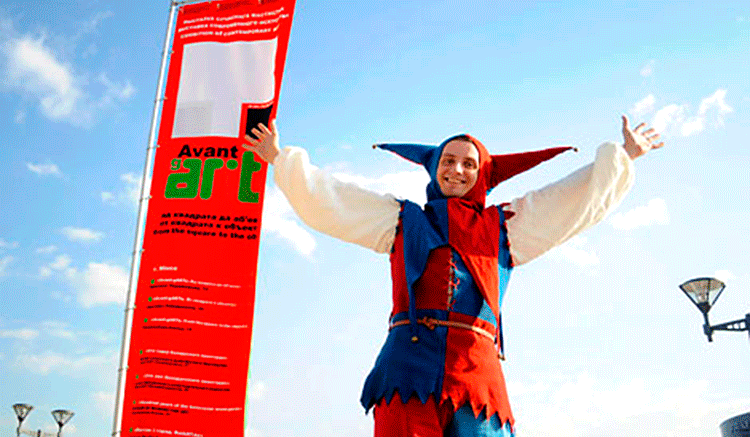
The opening of the «Avant-gARTe: from the Square to the Object»
In my opinion, one of the brightest examples of such an imitation is the exhibition «Avant-gARTe: from the Square to the Object», which unfortunately has not brought enough public reflection. Initially, the news about it was enthusiastically encountered by most artists: the organizers promised curators full autonomy and freedom of expression, which, of course, in a situation of almost a total impossibility for the author to exhibit his/her works could not but rejoice them. In the first place, the rush was caused by the space, which the artists had been offered — more than a thousand square meters. Besides, it was also offered not only to participate, but to create individual curatorial projects, that is to be independent from curatorial/commissar team headed by Natałla Šaranhovič (Natalia Sharangovich).
One can ask a question: did the general concept of the whole show actually exist? Indeed, sometimes there is a feeling that the main criterion for the selection of works or projects was «anything but landscape lyrics». As a result, in the common space there could be found the works of artists who dealt with contemporary art practices, fashion, textiles and neon lights. However, if we turn to the text provided by the curatorial/commissar team, it becomes clear that the idea was in the following: «The uniqueness of this project lies in the fact that for the first time the works of avant-garde and non-conformist art of the 1910-1990s are fully collected within a single exhibition. „Avant-gARTe: from the Square to the Object“ connects the works of avant-garde artists of the twentieth century and contemporary Belarusian artists of the XXI century, revealing the continuity of traditions and their development. .. It gives the opportunity to see the creative dynamics of the Belarusian art in the XXI century, its formal and imaginative search and experiments». That is, the text, despite its vagueness, points at complete (!) legitimation of everything that only recently has been stigmatized as underground.
Even Gallery Ў (Y), which at the official level remains «an outsider» in the country’s cultural field, was invited to participate, but it refused. The gallery’s supervisors did not get any answer to their request for a general concept of the project, which means that it was not clear which context their exhibition would be put in and this fact actually threatened its autonomy. And this is what really happened with the works of those who did agree to participate.
In the course of the final discussion it was noticed that the participants were not given that autonomous space they had been promised, moreover some works in general were shown beyond professional curatorial ethics.
For example, Žanna Hrak’s (Zhanna Grak) installation the artist presented Museum of Modern Fine Art with was «intuitively» assembled by the organizers into some incomprehensible construction without the artist’s permission. Another example were unevenly placed Uładzimir Cesler’s works, which performed rather a decorative function of the room’s embellishment. (By the way, it does not happen with Cesler’s works for the first time: last year within the First Biennial of Contemporary Art his works and Siarhiej Vojčanka’s «Project of the Century. 12 of XX» were shown in the lobby, beautifying the grand staircase in the form of a semicircle that probably, according to the curators, was aimed at welcoming contemporary art amateurs somehow following to the «bread and salt» ritual). As an answer to the question about the reasons for such a non-ethical attitude to the works posed in the course of the discussion one of the organizers suggested… to ignore this fact.
Of course, one could speak about neither contemporary art, nor about freedom and eventually «avant-garde», if we give this name to artistic practices the language, goals and values of which differ from the official culture. Any element of critical potential was fully covered by the shade of the chandelier following the best Soviet traditions of conviviality.
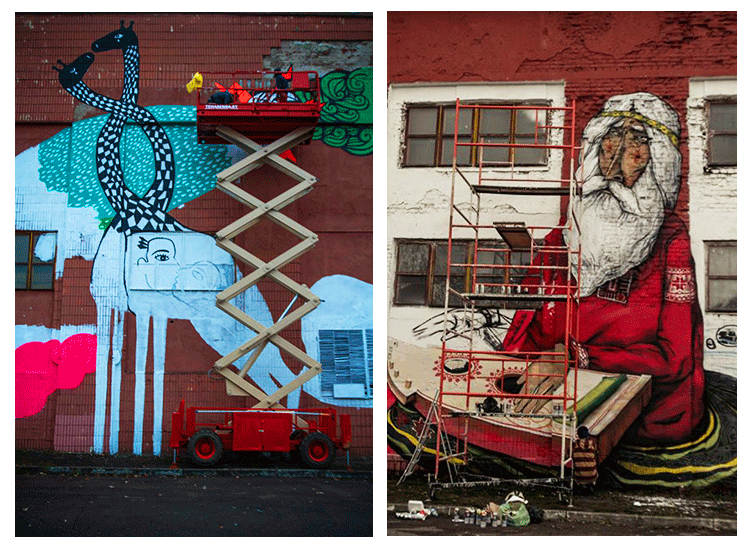
Street art festival «Vulica Brasil»
Street art festival «Vulica Brasil» in which Brazilian and Belarusian street artists took part can be named as another recent example of imitation and appropriation of contemporary art practices. It seems that one should feel happy: finally street art was not only destroyed and the artists were given fines, but on the contrary — a working place was specially arranged for them, and then even shown on the main TV channel. But again anxiety appeared due to that blind enthusiasm with which the curators and Belarusian participants were promoting the project.
Ironically, just before the beginning of the festival a piece made by the Belarusian artist Siarhiej Kiruščanka (Sergey Kiruschenko) painted in Kastryčnickaj Street in 2012 during his ambitious project «Metabolism of Pictorial Space» had been destroyed. The uniqueness of this piece was connected not only with the fact that it had been done in public space, it was more important that its author was a famous artist whose paintings were already of a very high (non)material value. But just like in the case with the work of the outstanding Polish artist of Belarusian origin Lavon Tarasievič in Vitebsk Art Museum, destroyed a few years ago, Kiruščanka’s piece seen by the client as some low quality graffiti on the fence now is also gone forever, and this fact was given very little coverage in mass media. And already shortly after the curators were rejoicing, claiming «… finally … for the first time …» there was a street art festival, and not simply festival, but with the participation of guest Brazilian artists who would draw graffiti the capital had not seen yet.
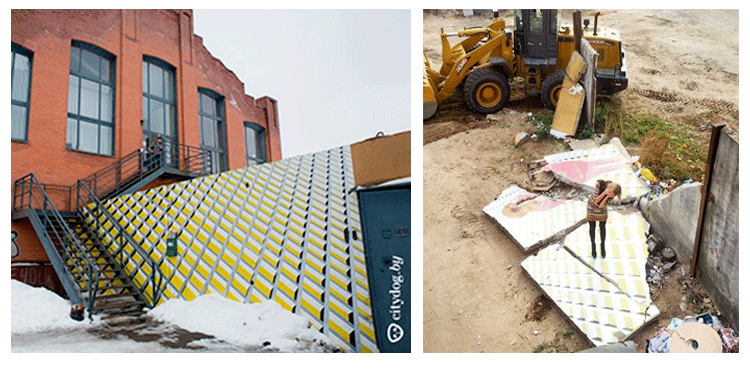
Left: the original work by Siarhiej Kiruščanka 2013. Right: the destroyed work 2014
Street artists were glad, the public was actively posting the guests’ pieces in social networks — wasn’t it fantastic? But firstly, as it was mentioned above, almost nobody recalled the destroyed piece of Kiruščanka’s that had been painted exactly at the same spot where the authorities allowed the Brazilian guys to paint. Secondly, no attention was given to the key wording — «the authorities allowed», which actually did become the central reason for the «miracle» to appear: with a different scenario, our local guys would have surprised Minsk dwellers a long time ago, without fighting for every inch of freedom on the fence. Thirdly, the «the authorities allowed» phrase in relation to street art in general sounds absurd. (Just like does, by the way, the Forum of Street Theaters in Minsk surrounded by policemen, as tut.by clearly described the event). And the thing is not only about street art which has turned out to be put into the museum. On the one hand, it completely brings down its critical potential it used to have when being held in Western Streets. On the other hand, referring to the Groys’ idea, this is a natural process, and the same thing happens in Western Europe. But there street art has made a real way — from capturing public spaces and gaining a certain victory to being finally legitimized by the museum.
Needless to say, that in its function street art exists in Belarus in embryo state, so its museumification is far from being natural legitimization, but rather castration, a complete substitution of concepts, when occupy art suddenly turns into a simple street design.
In my opinion, these two projects present a good example of the dangers of contemporary art imitation, which are not connected with the natural legitimization Groys writes about. These are the system’s attempts and forms to assign to its ideology the critical capital of contemporary art practices and transform it into «fun», a mere decorative background, and they are totally dangerous.
DISCUSSIONS AROUND THE 6TH LINE
In the middle of autumn another significant project was set in Minsk, which we only will have to give our further evaluation and understanding in terms of what can be done with this capital. After 16 years of oblivion the forum Suma Sumarum opened with a series of events, dedicated to the activities of Contemporary Art Gallery The 6th Line in the 1990s. In addition to the conceptual issues, the main reproach to the organizers and participants (those who once used to be exhibited at The 6th Line) has to do with the collaboration with state institutions: the project was set on two platforms — in Museum of Modern Fine Art and in Center for Contemporary Art.
On the one hand, I would agree with Maksim Tymińko, one of the project’s participants, who noted speaking about MMFA and CCA: «Yes, it is the enemy’s territory, but it is given for free. Whereas „friendly“ territories expose you to commercial prices». That is, often when criticizing «collaboration», people forget that mere enthusiasm and firm positions are not enough to make a project. Since we still do not have functioning, completely independent non-profit platforms or centers.
On the other hand, how can we avoid the traps of being appropriated, that is devoid of critical potential and meaning which most often occurs with initiatives that cooperate with state institutions?
In this regard, it seems effective to refer to the experience of Manifesta 10 in St. Petersburg, which also provided us with the example of an attempt of cooperation of, conditionally, independent Western European Biennale at the territory of the conservative Hermitage space. I remind that the main intrigue around Manifesta 10 dealt with the geopolitical background — events in Ukraine and their connection with Russia. It was this fact which became a reason for boycotting Biennale, it was repeatedly proposed to have the venue changed. Nevertheless, Manifesta 10 was held in St. Petersburg, but in spite of the curators’ intention to defend their positions — both artistic (the main program by Kasper König) and civil ones (Joanna Warsza’s parallel program), the discussion participants organized by pARTisan in August in Minsk, unequivocally stated: Manifesta (literally, Western Europe) assumed that it would be able to occupy/colonize Russian cultural institutions, but actually it got colonized itself (V. Šparaha).
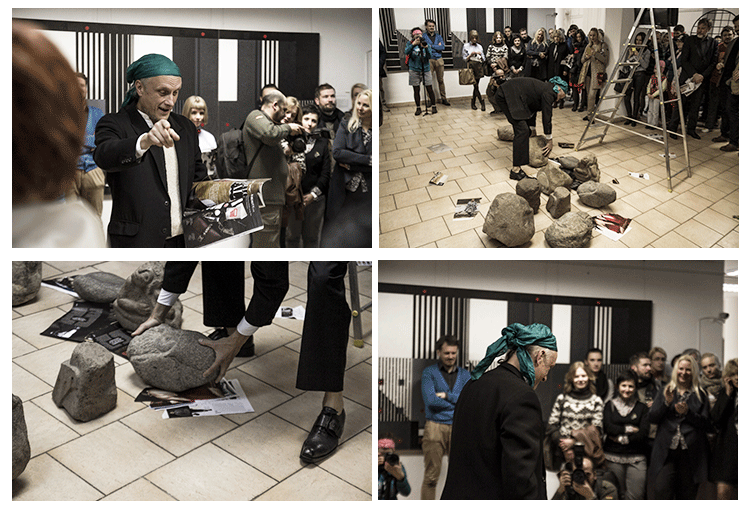
The performance by I.Kaškurevič during the opening of Suma Sumarum forum
During the discussion the situation with the Belarusian cultural field was also touched upon, for which the (non)participation, and practices of (not)boycotting remain valid and unresolved issues. Volha Šparaha pointed out that, unfortunately, more often the system wins making use of contemporary art practices, energy of the activists to make them fit its context. In doing so, the system deprives our local «vanguard» of any power and meaning, «vanguard» seizes being such and becomes a mere imitation, a backdrop for allegedly adequate European city in an adequate European country.
But what response is possible? The strategy of a complete autonomy in the situation where to create full-fledged institutions is hardly possible would be effective, but it would function rather for the sake of its own survival. One is also unlikely to speak about social or civil impact. That is — the dialogue is needed, especially when independent cultural activists are backed up by Western values — we have to negotiate, and thus try to change the situation from the inside.
But how can we defend the inviolability of contracts, sincerity and openness? How can we learn not close our eyes to the hypocrisy and cynical exploitation of the activists’ energy?
These questions remain open for me, and probably they need to be solved in each particular case. For example, when it is one thing when we discuss the participation of Belarus in the Biennale in Venice. It is important for us to be present there, because here we speak, first of all, about overcoming the situation of isolation Belarusian art has been in so far and what is more— the whole country, too. Another problem deals with gaining openness, holding a real contest, not a simulation? How to break the monopoly of particular individuals who use their influence and decide themselves who has the right to be present in the official art field and who does not?
Another situation appears around the cooperation within such local projects as the Biennale of Contemporary Belarusian Art, or «Avant-gARTe: from the Square to the Object», where it is impossible to control the results. But if to give it a better thought, maybe we just need to get rid of the illusion that what we used to call informal, underground art in Belarus today has become a monolith (and maybe it used to be a monolith, too?). It is hardly possible to make everyone share the values of openness and solidarity. Rather, it is necessary to gather a circle of the like-minded, who are interested not in important spheres of influence or getting personal bonuses, but in the changes that would bring the country out of the post-Soviet airless sleep.
Tania Arcimovič
(1) Groys B. Gesamtkunstwerk Stalin. М.: Ad Marginem, 2013. P. 14
(2) Ibd. P. 24
(3) Winzen М. Quality in Art. Can the exhibition «documenta» be considered as an instance? М. 2014. P. 14.
(4) Ibd. P. 18
Opinions of authors do not always reflect the views of pARTisan. If you note any errors, please contact us right away.



